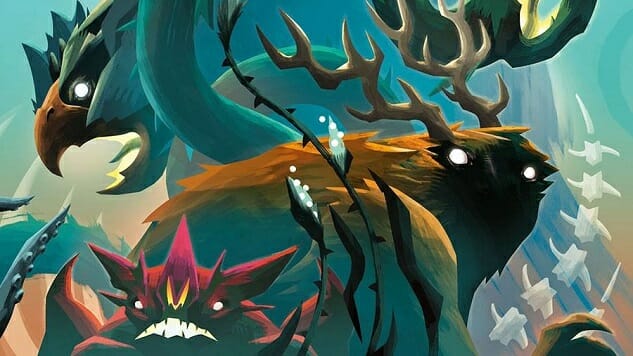We Deduced that Cryptid Is One of the Best Board Games of 2018

One of my top ten games of 2018, Cryptid looks like a regular area-control or worker-placement board game. It’s actually a deduction game that distills a single mystery—on which hex is the mysterious Creature located—down to a fixed number of clues matching the number of players. If you combine all of the players’ clues together, only one space could still be the answer to the puzzle, and you win the game by being the first to use a turn to correctly identify that space. Of course, solving the puzzle is part of the fun, but you have to try to keep other players from deducing your clue as you try to guess theirs, and that misdirection is almost as fun as winning the whole thing.
The Cryptid board is variable, and you can use cards that come with the game or the game’s site at ospreypublishing.com/playcryptid to get the setup and clues for a specific puzzle. The board has X hex spaces on it, with five terrain types and multiple bear or cougar territories, and six fixed structures to start the game (eight if you play the advanced mode), two each in green, white, and blue. Each player then gets a clue about the Creature’s location that specifies that the Creature is N spaces from something. For example, the Creature could be within three spaces of a green structure, or within two spaces of a cougar territory. The clue could also say the Creature is on a forest or desert space, or say it’s within one space of an animal territory of either type.
On your turn, you get to ask one opponent a single question: According to your clue, could the Creature be here, where you place the black pawn on any space on the board. The responding player must answer truthfully, placing a round disc on the space if their clue means the Creature could be there and a cube if the clue precludes it. If the latter is true and the other player says “no,” then you must also place one of your cubes on a space where the Creature could not be, according to your clue. Players go around the table, asking questions, and the board will gradually fill up with yes and no tokens.
-

-

-

-

-

-

-

-

-

-

-

-

-

-

-

-

-

-

-

-

-

-

-

-

-

-

-

-

-

-

-

-

-

-

-

-

-

-

-

-








































